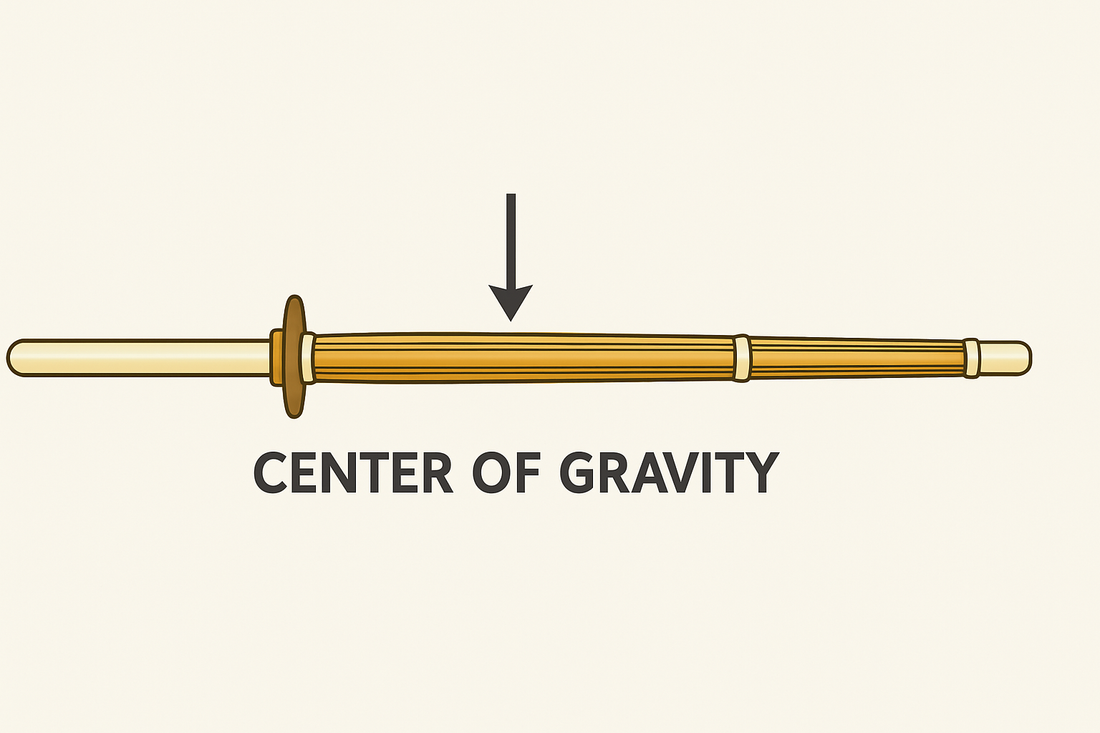
How to Find the Center of Gravity on a Kendo Shinai
If you’ve ever picked up two shinai and noticed that one feels lighter or faster than the other, you’ve already experienced the difference in center of gravity (CG). The CG is simply the point where the shinai balances, and it makes a big difference in how the sword feels during practice.
Why the Center of Gravity Matters
- Forward balance (toward the tip): feels heavier, stronger, and closer to a real sword. Good for strikes.
- Backward balance (closer to the hands): feels lighter and quicker. Good for fast, sharp attacks like men and kote.
- Middle balance: gives you an all-around, standard feel.
Different shinai designs shift the CG, which is why choosing the right type depends on your style.
How to Find the Center of Gravity on Your Shinai
- Lay your shinai flat. Place the shinai across your finger, or use something round like a pencil or rod.
- Slide to balance. Slowly move the shinai until it balances perfectly without tipping forward or backward.
- Mark the point. That balancing point is the center of gravity.
- Measure it. For a standard men’s shinai (size 39, about 120 cm long), the CG usually sits around 60–65 cm from the end of the handle (tsuka).
Shinai Types and Their Balance
- Dobari shinai: CG closer to your hands → light and fast. (Ichikawa or Hitoyama)
- Koto shinai: CG closer to the tip → heavy and powerful. (Okawa or Oyama)
- Standard shinai: CG near the middle → balanced feel. (Ippu)
The center of gravity is one of the hidden features that can completely change how a shinai feels. Next time you’re choosing a new shinai, take a moment to balance it and see where the CG sits. You might find that a small difference makes a big change in your keiko.
